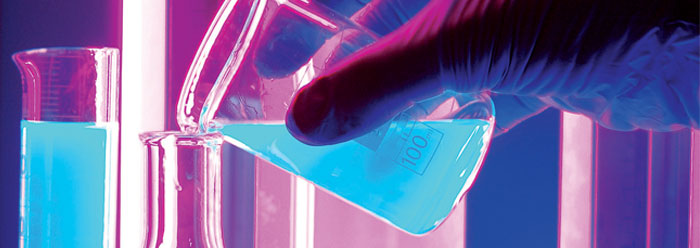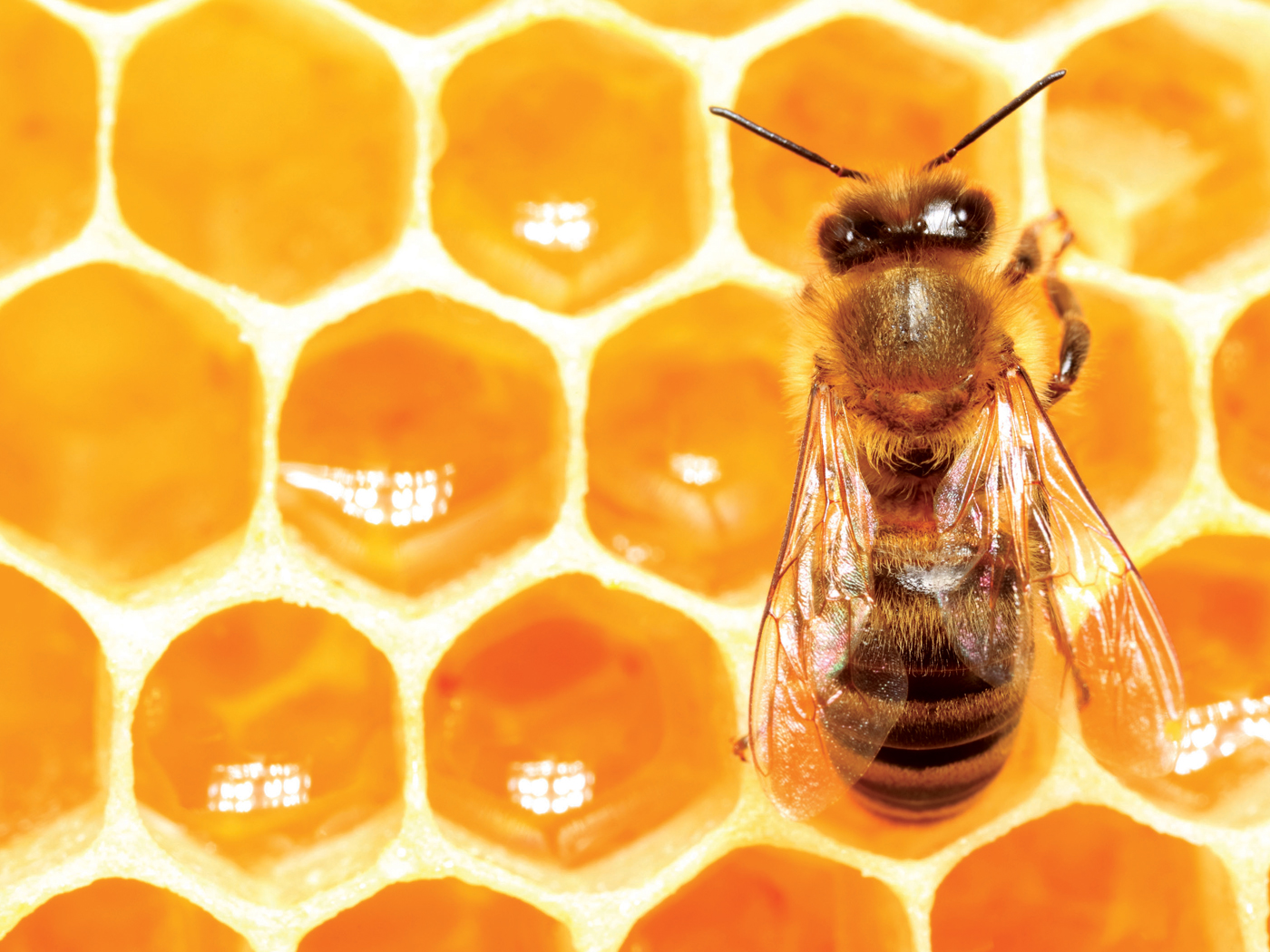Scientists observe life today in order to determine what processes were at work when life originated on this planet. It would be like looking at a 100-year-old photograph to determine which camera was used. The best result this type of analysis can provide is conjecture, and conjecture is the best that chemical evolution can produce. Evolutionists tell the tale that life was formed from chemicals, in some primordial soup from which life arose by accident.
Can random chemical "accidents" produce the building blocks of life? The following eight obstacles in chemistry ensure that life by chance is untenable.
1. The Problem of Unreactivity
The components necessary for life can be formed only by certain chemical reactions occurring in a specific environment. Water is an unreactive environment for all naturally-occurring chemicals. In a watery environment, amino acids and nucleotides cannot combine to form the polymeric backbone required for proteins and DNA/RNA. In the laboratory, the only way to cause a reaction to form a polymer is to have the chemical components activated and then placed in a reactive environment. The process must be completely water-free, since the activated compounds would react with water. How could proteins and DNA/RNA be formed in some primordial, watery soup if the natural components are unreactive and if the necessary activated components cannot exist in water?
2. The Problem of Ionization
The problem of ionization also involves the issue of unreactivity. To produce a protein, the amine group of one amino acid must react with the acid group of another amino acid to form an amide bond. Such reactions must take place hundreds of times to build a protein. As mentioned above, the amino acid must be chemically activated to form the polymer, because without activation every amino acid would be ionized because of an acid-base reaction. The amine group is basic and will react quickly with the acid group also present. This acid-base reaction of amino acids is instantaneous in water, and the components necessary for protein formation are not present in a form in which they can react. This is the problem of ionization.
3. The Problem of Mass Action
There is another major problem that will be encountered while trying to form the polymeric backbone of a protein or DNA/RNA. Every time one component reacts with a second component forming the polymer, the chemical reaction also forms water as a byproduct of the reaction. There is a rule of chemical reactions (based on Le Chatelier's Principle) called the Law of Mass Action that says all reactions proceed in a direction from highest to lowest concentration. This means that any reaction that produces water cannot be performed in the presence of water. This Law of Mass Action provides a total hindrance to protein, DNA/RNA, and polysaccharide formation because even if the condensation took place, the water from a supposed primordial soup would immediately hydrolyze them. Thus, if they are formed according to evolutionary theory, the water would have to be removed from the products, which is impossible in a "watery" soup.
4. The Problem of Reactivity
Chemical reactivity involves the speed at which components react. If life began in some primordial soup through natural chemical reactions, then the laws of chemistry must be able to predict the sequence of those polymer chains. If a pool of amino acids or nucleotides came together in this environment, reacting to form the polymer chain of a protein or DNA/RNA, then there would have to be a chemical mechanism that determines the sequence of the individual components.
In chemical reactions, there is only one way that all chemicals react: according to their relative reaction rates. Since all amino acids and nucleotides have different chemical structures, that difference in structure will cause each component to react at different rates. Consequently, each of the known amino acids and nucleotides has a known relative reaction rate, but this fact causes a serious problem for evolution. The relative reaction rate tells us how fast they react, not when they react.
In a random chance chemical reaction, the sequence of amino acids can only be determined by their relative reaction rates. The polymer chain found in natural proteins and DNA/RNA has a sequence that does not correlate with the individual component’s reaction rates. In reality, all of the amino acids have relatively similar structures, and, therefore, they all have similar reaction rates. The same holds true for the polymerization of nucleotides to form DNA/RNA. The problem is that since all of the amino acids or nucleotide components would react at about the same rate, all proteins and all DNA/RNA would have a polymeric sequence different than that observed in our bodies. The product of natural or random reactions could never provide the precise sequences found in proteins and DNA/RNA.
5. The Problem of Selectivity
Chemical selectivity concerns where components react. Since every chain has two ends, the reacting components can add to either end of the chain. Even if by some magical process a single component would react first followed by a second component, the products formed would be a mixture of at least four isomers because there are two ends to the chain. If there is an equal chance of one component reacting in two different locations, then half will react at one end and half at the other end. When the addition of the second component occurs, it will react at both ends of the chain of both products already present.
Since the reaction rates for the amino acids are similar, as are those of the nucleotides, you would see all components adding randomly to both ends of the building chain. The result is a mixture of several isomers of which the desired sequence is only a minor product, and this is the problem with adding only two amino acids. As the third amino acid would begin to add, it can now react at both ends of four products, and so on.
But since proteins may contain hundreds of amino acids in an exact sequence, imagine the huge number of undesired isomers that would be present from a random chance process. DNA/RNA contain billions of nucleotides in a precise sequence. Evolutionists might argue that all DNA/RNA and proteins were formed in this random manner and nature just selected the ones that worked. However, this assumption ignores the fact that there are not billions of "extra" DNA/RNA and proteins in human body.
6. The Problem of Solubility
As the polymer chain becomes longer and as more components are added to the chain, the reactivity or rate of formation of the polymer becomes slower and slower, and the chemical solubility of the polymer in water decreases. Solubility is a vital factor because both the activated component and the polymeric chain to which it is being added must be soluble in water for the desired reaction to work. In fact, there is a point where the length of the polymer will decrease its solubility, eventually making the polymer insoluble in water. When this happens, the addition of more components will stop and the chain will not get any longer. However, the desired proteins and DNA/RNA found in the body would never be formed because the components are insoluble.
7. The Problem of Sugar
Nucleotides, necessary for DNA and RNA, are formed by the reaction of a sugar molecule with one of four different heterocycles. Evolutionary theory requires that sugar must be present in that primordial soup. However, the presence of sugar creates another problem. The sugars required for DNA and RNA synthesis are called reducing sugars. Reducing sugars can cause the formation of undesired reaction products, plus they also remove the components necessary for the reaction. If amino acids (to form proteins) and sugars (to form nucleotides) were present in that soup, they would instantly react with each other, thereby removing both components from the mixture. The product of this undesired reaction cannot react with amino acids to form a protein chain, and that same product cannot react with heterocycles to form a nucleotide leading to DNA or RNA.
8. The Problem of Chirality
Chirality is a property of many molecules with three-dimensional structures. Many molecules may have the same number and type of atoms and bonds, but differ only by being mirror images of each other. Such molecules are said to possess chirality or "handedness." Every single amino acid of every natural protein is made of "left-handed" molecules and every nucleotide of every DNA/RNA molecule is made of "right-handed" molecules. Proteins and DNA/RNA work as they do in the human body because they possess chirality; they work because chirality gives them the correct three-dimensional structure. Only one configuration works; the others do not. If proteins and DNA/RNA were formed by evolution, then the products formed would have the wrong chirality and, therefore, the wrong three-dimensional structure. Molecules of the wrong chirality do not support life in our bodies.
Problems Solved
The chemical control needed for the formation of a specific sequence in a polymer chain is just not possible through random chance. The synthesis of proteins and DNA/RNA in the laboratory requires the chemist to control the reaction conditions, to thoroughly understand the reactivity and selectivity of each component, and to carefully control the order of addition of the components as the chain is building in size. The successful formation of proteins and DNA/RNA in some imaginary primordial soup would require the same level of control as in the laboratory, but that level of control is not possible without a specific chemical controller.
Any one of these eight problems could prevent the evolutionary process from forming the chemicals vital for life. Chirality alone would derail it. This is why evolutionary scientists hope you don't know chemistry. Darwin asserted that random, accidental natural processes formed life, but the principles of chemistry contradict this idea. The building blocks of life cannot be manufactured by accident.
* Dr. McCombs is Associate Professor of the ICR Graduate School, and Assistant Director of the National Creation Science Foundation.
Cite this article: McCombs, C. A. 2009. Chemistry by Chance: A Formula for Non-Life. Acts & Facts. 38 (2): 30.













